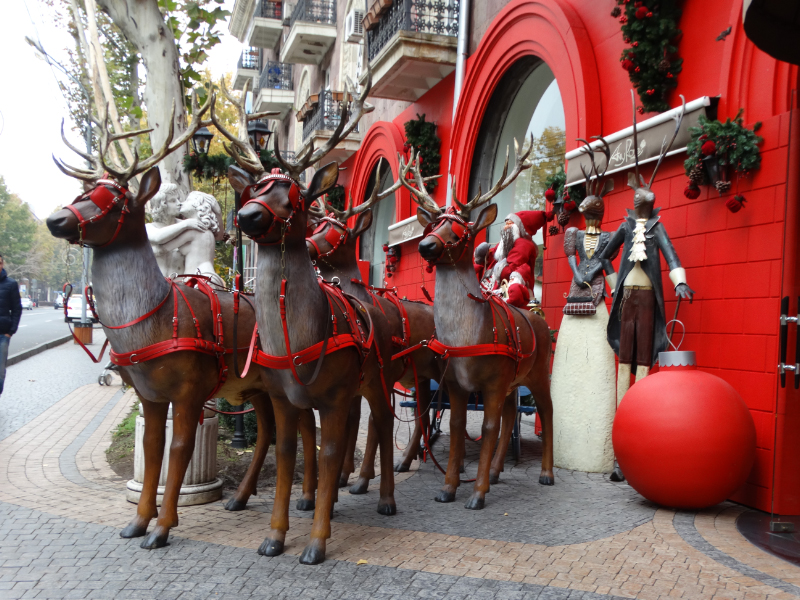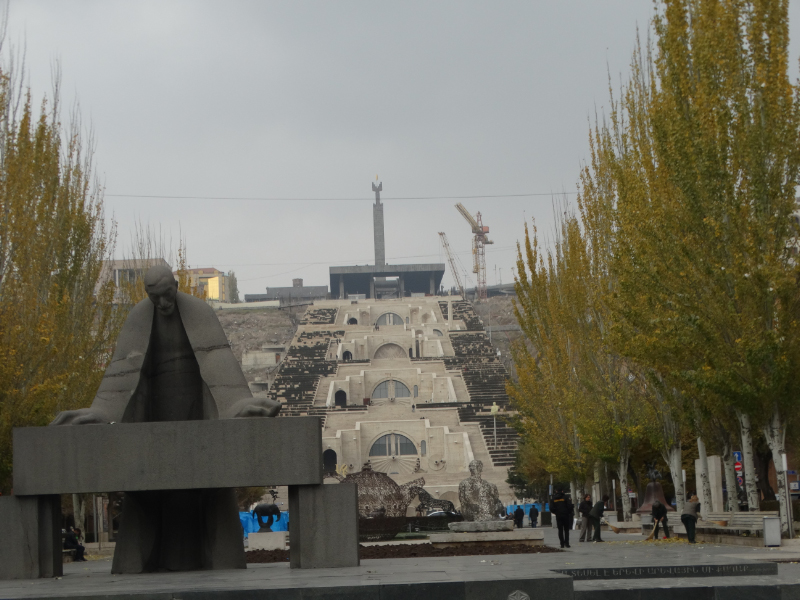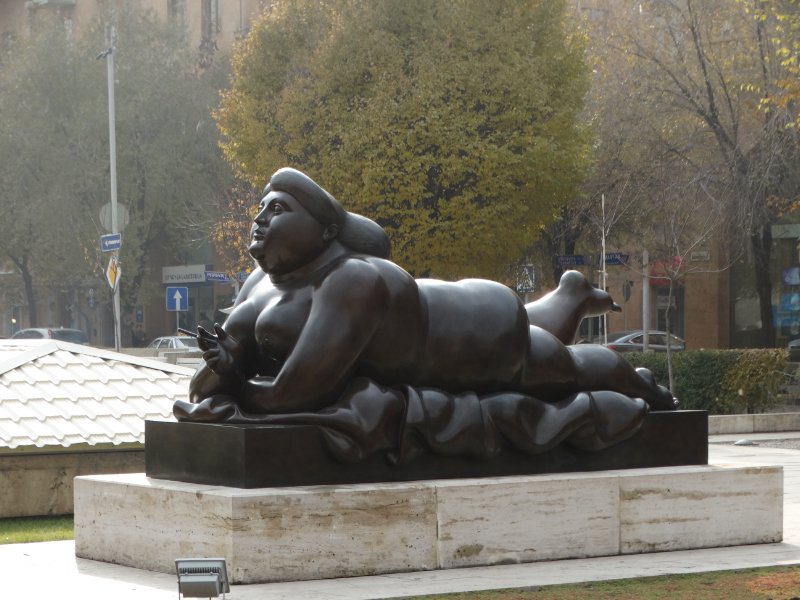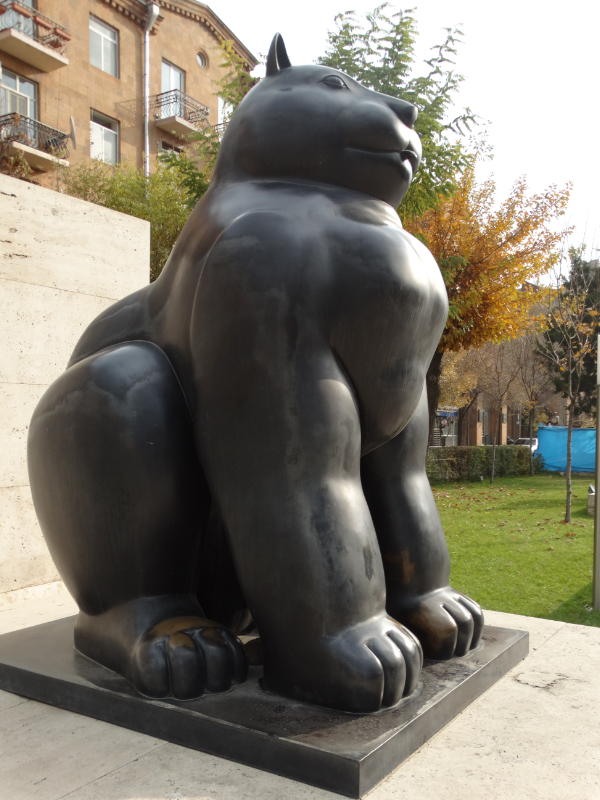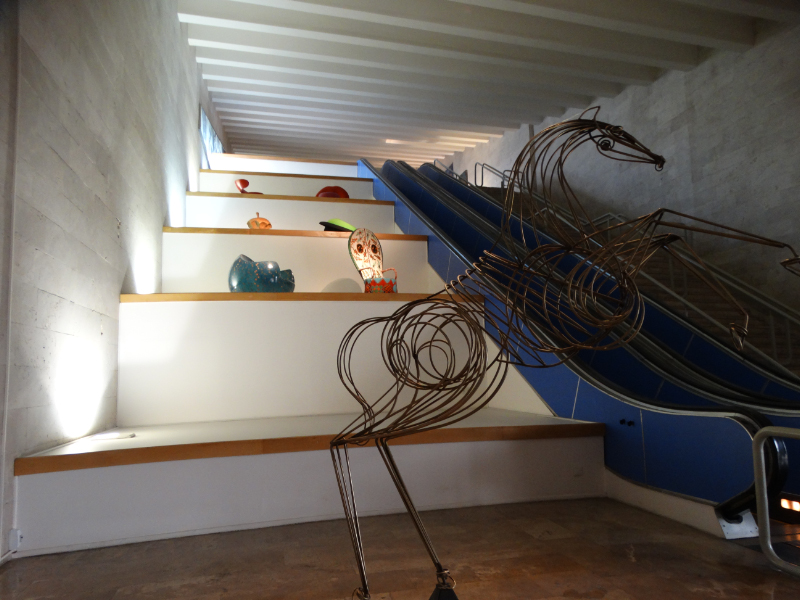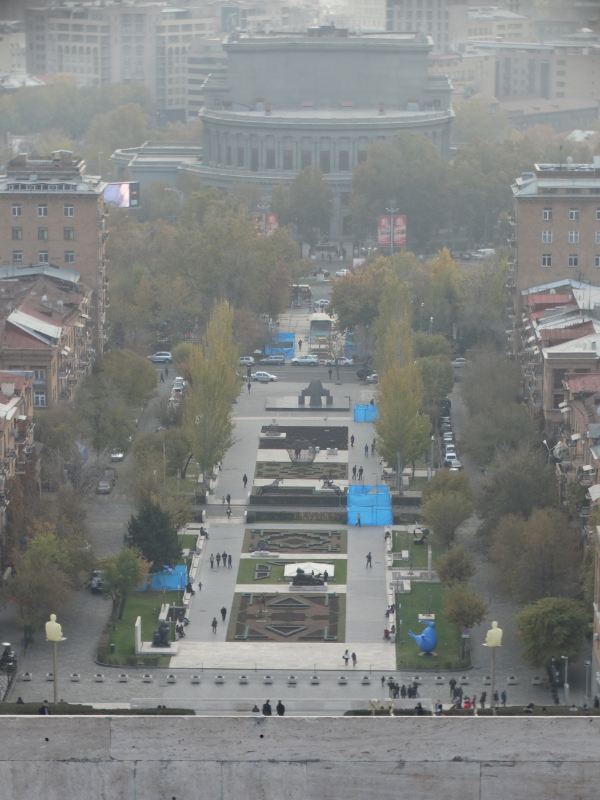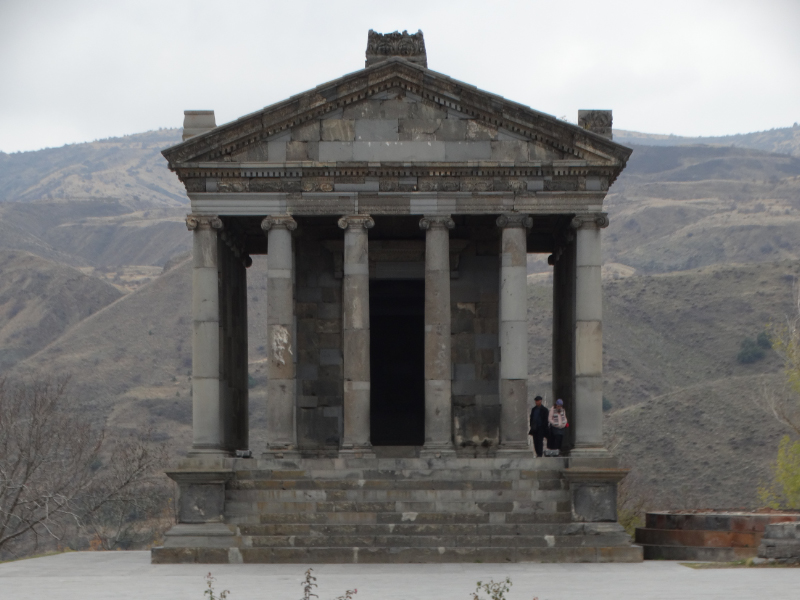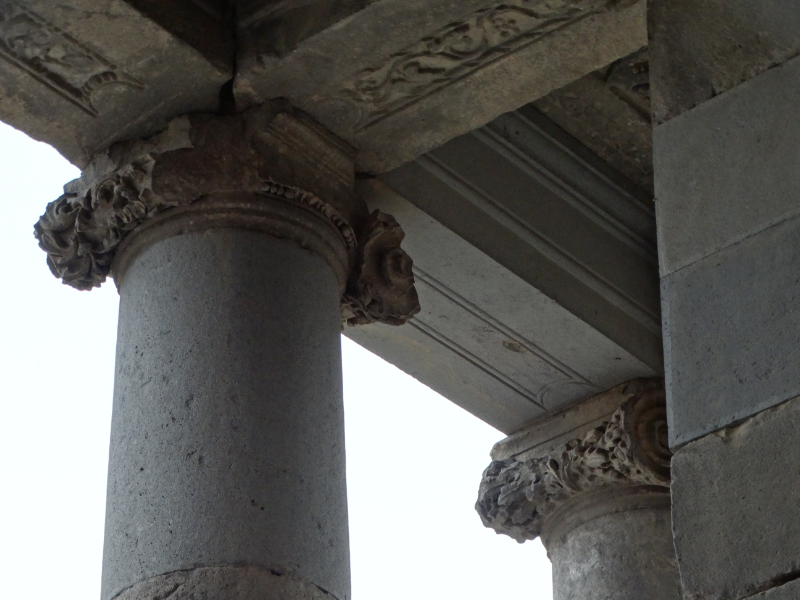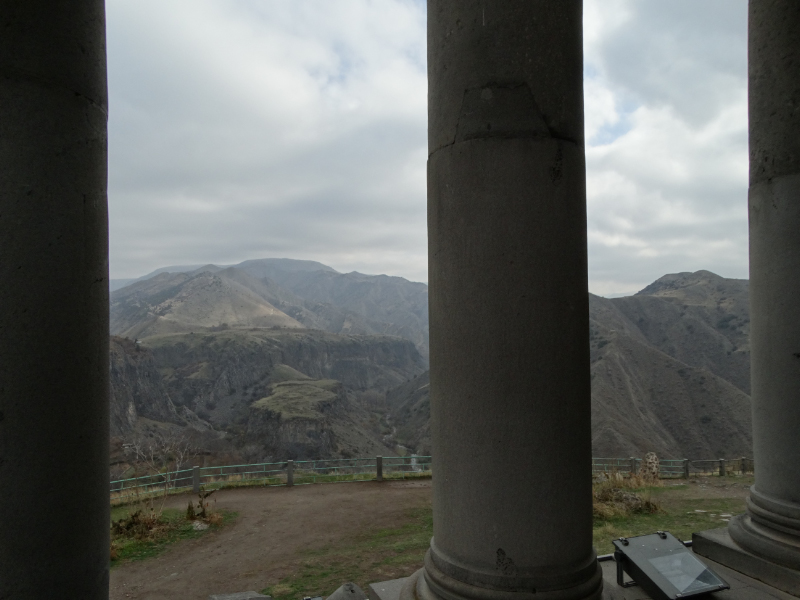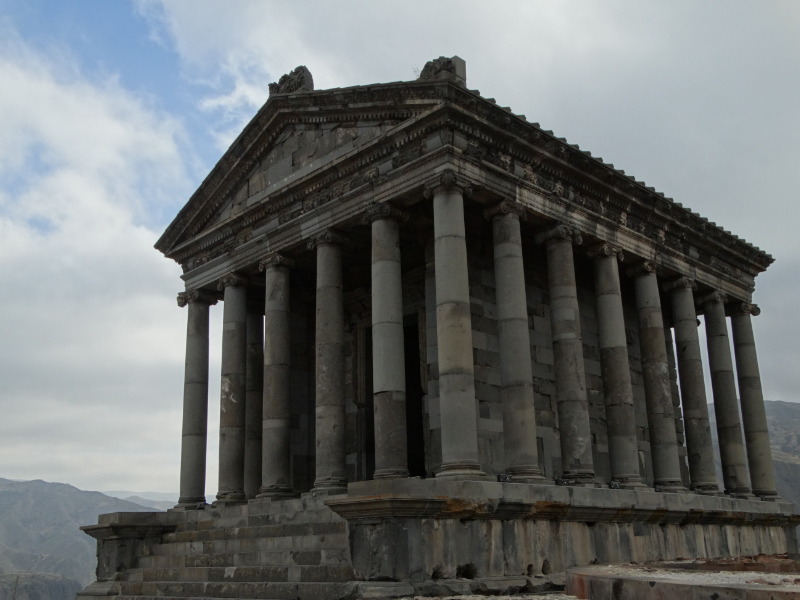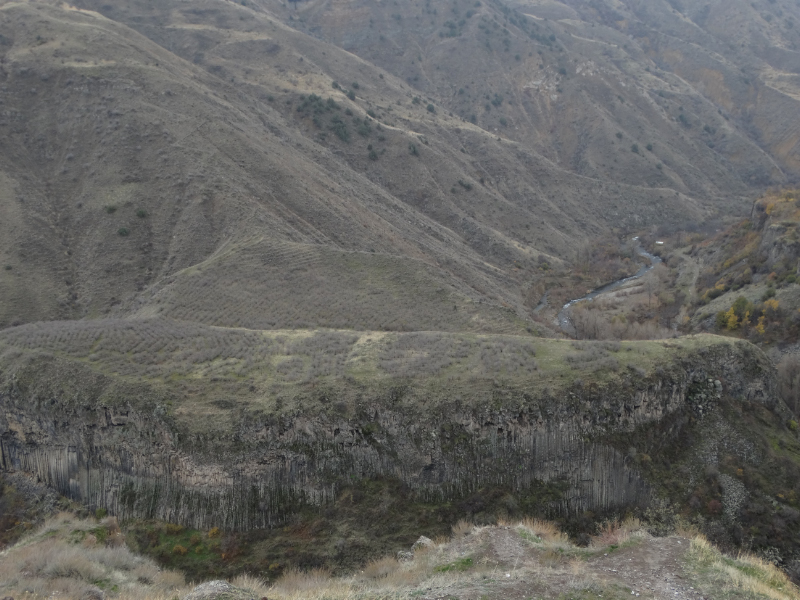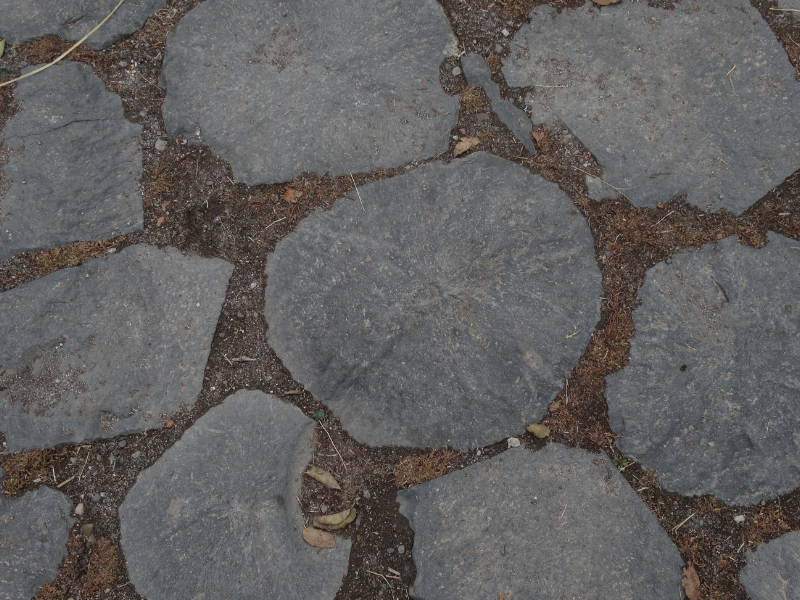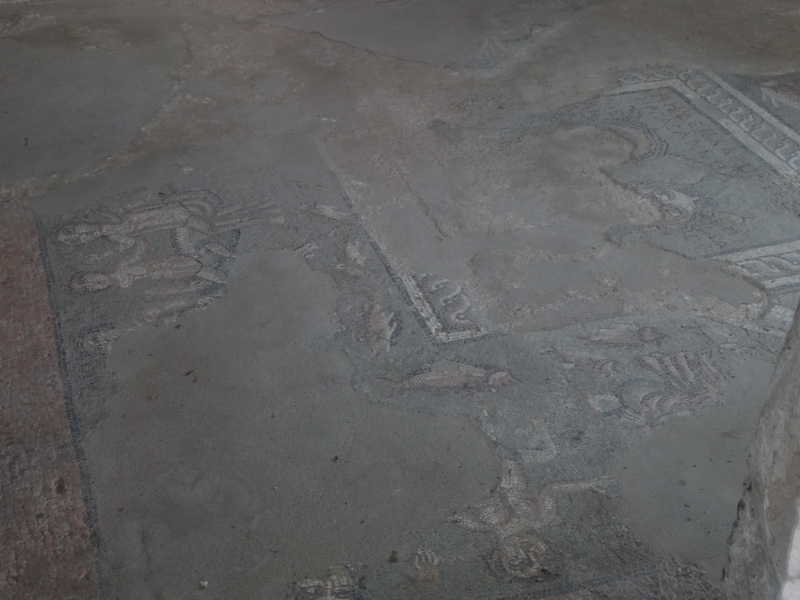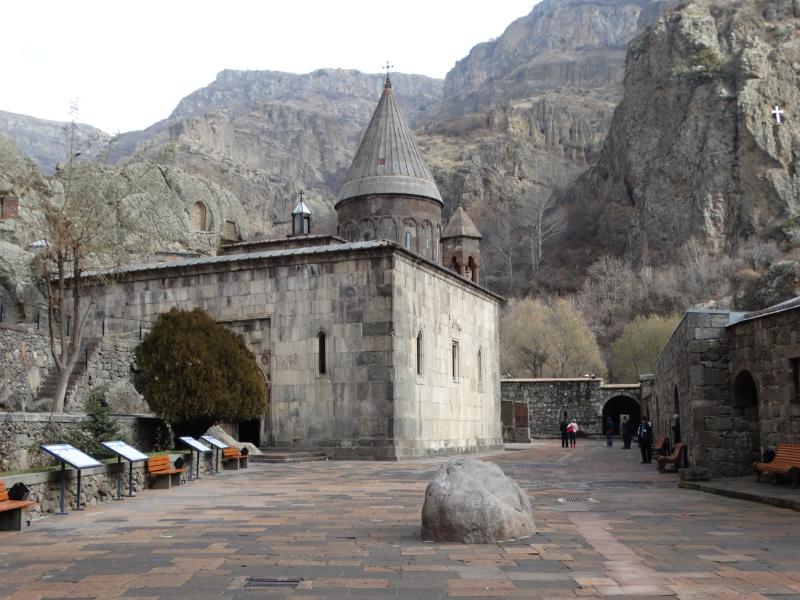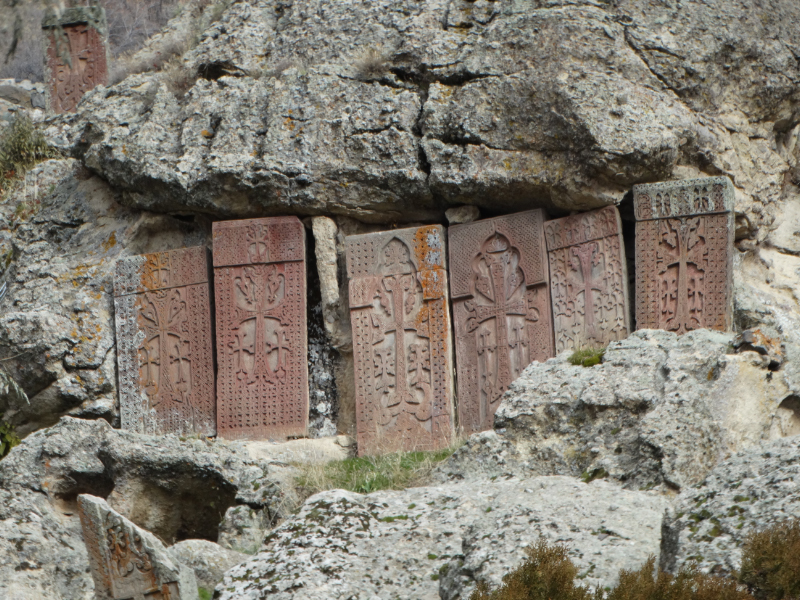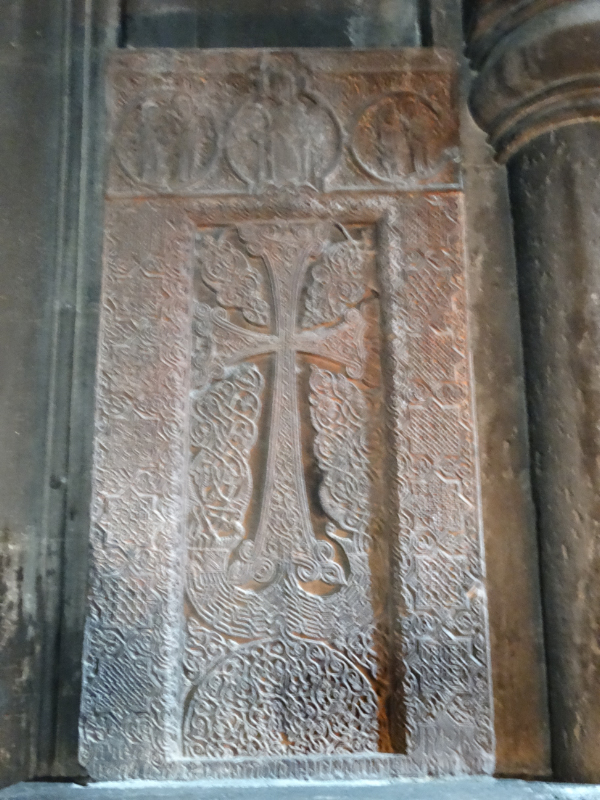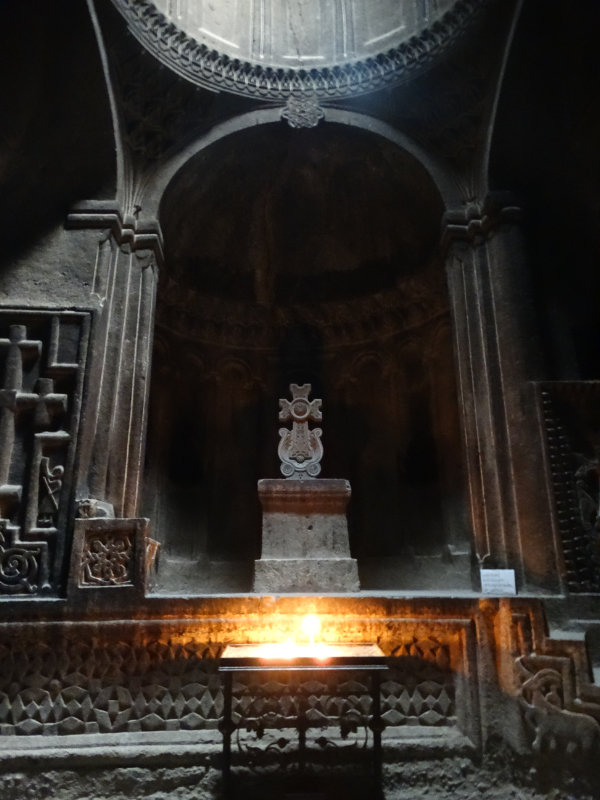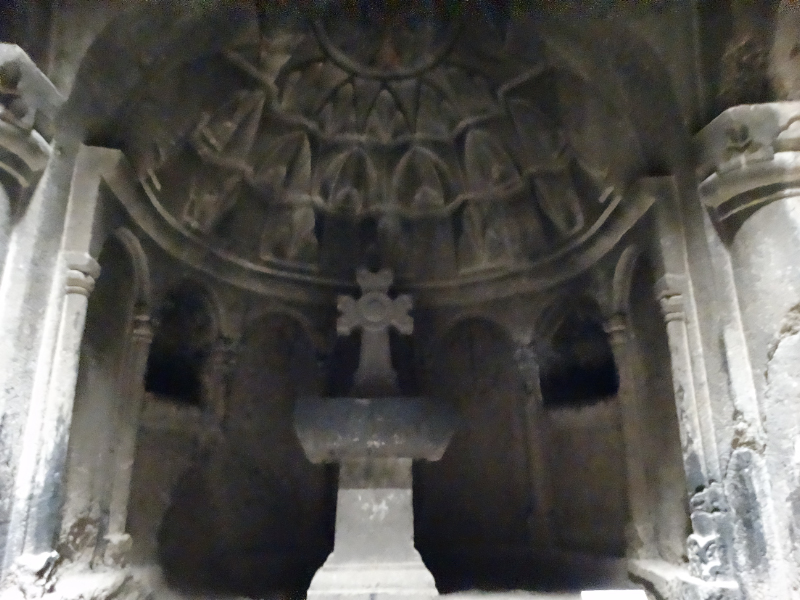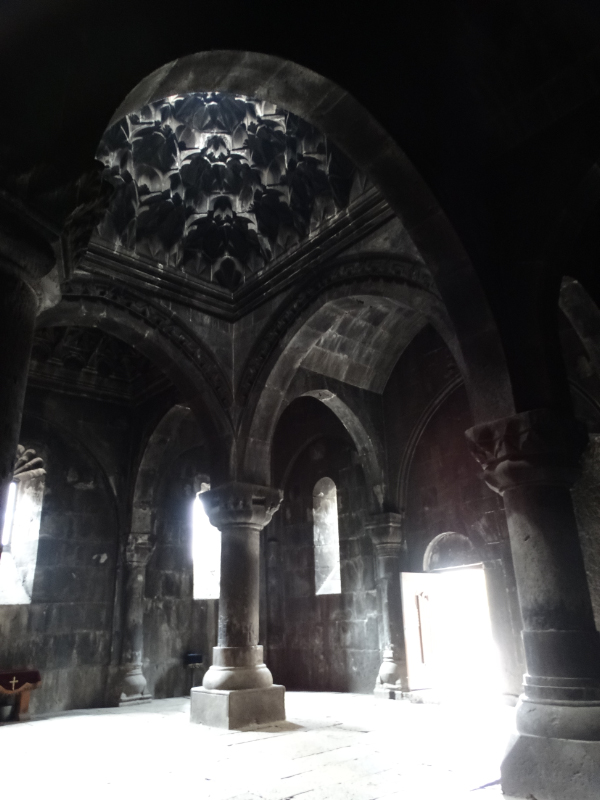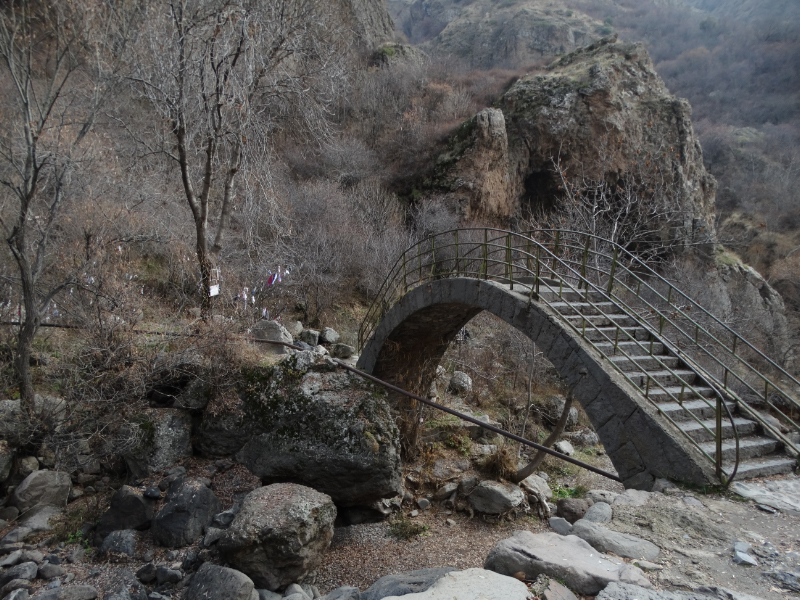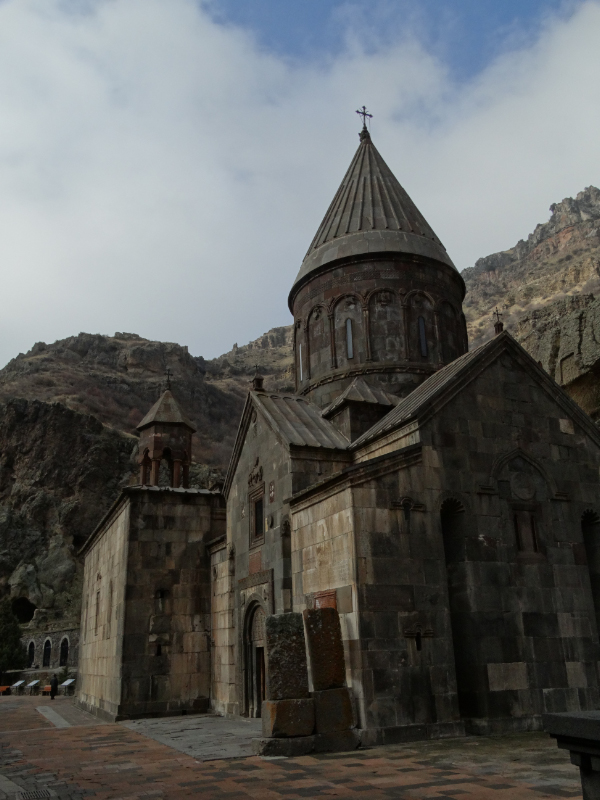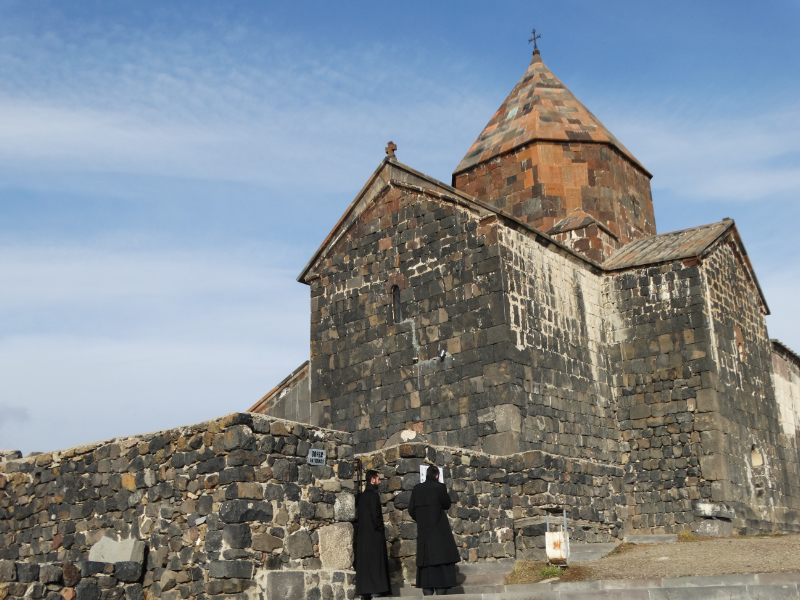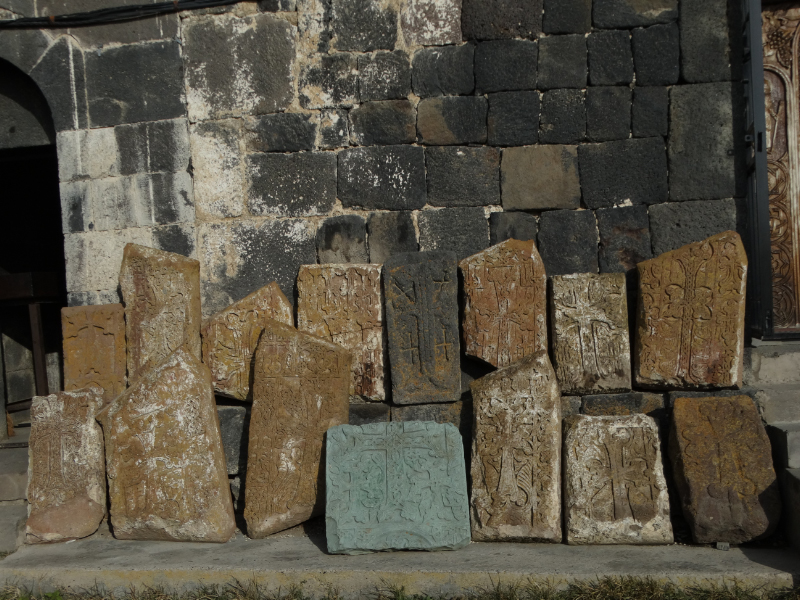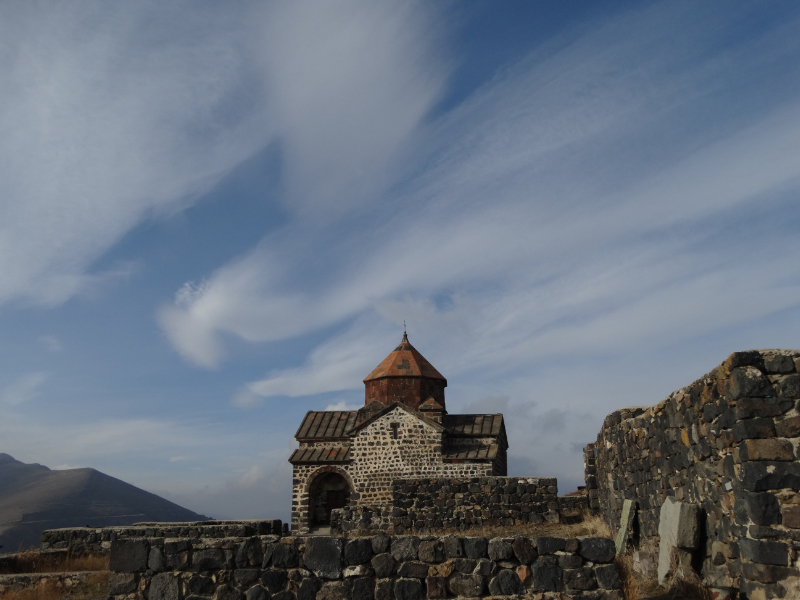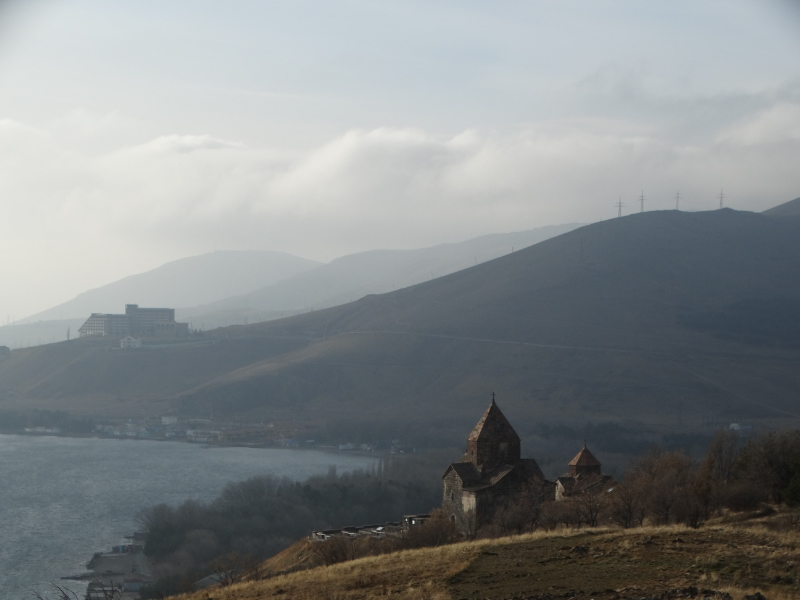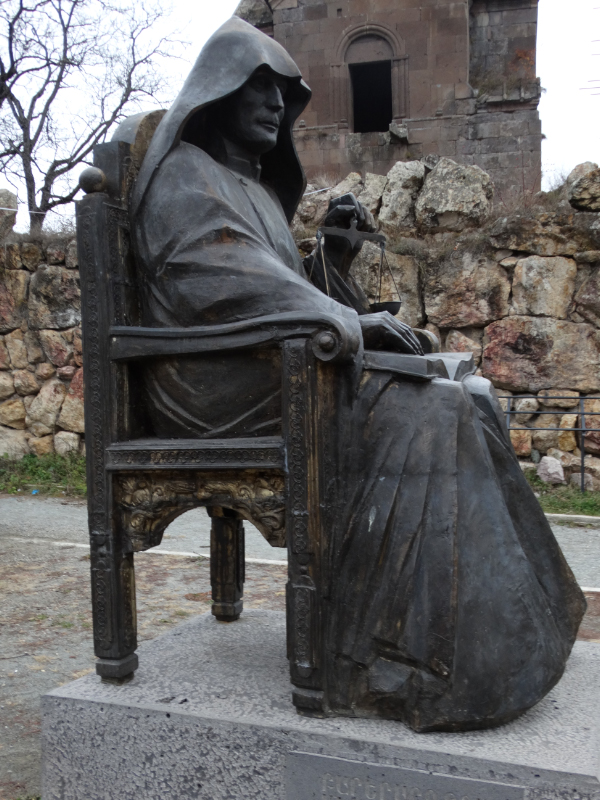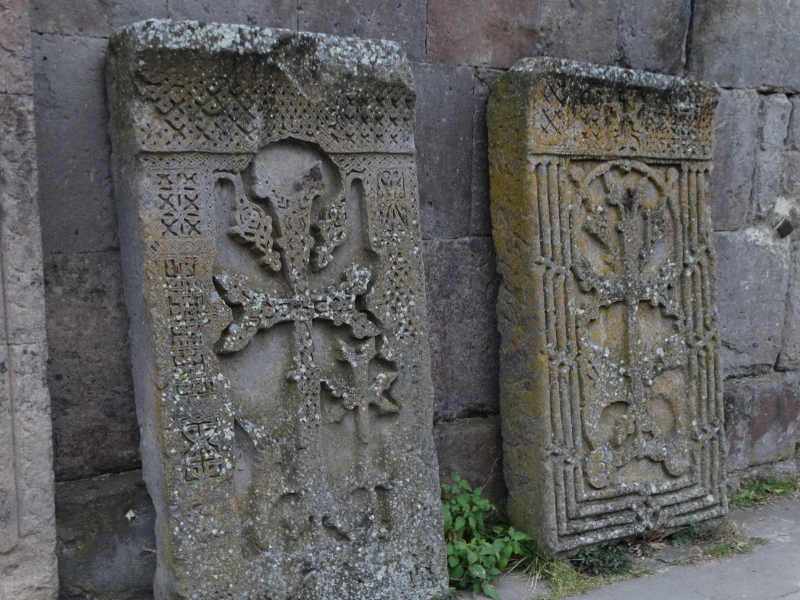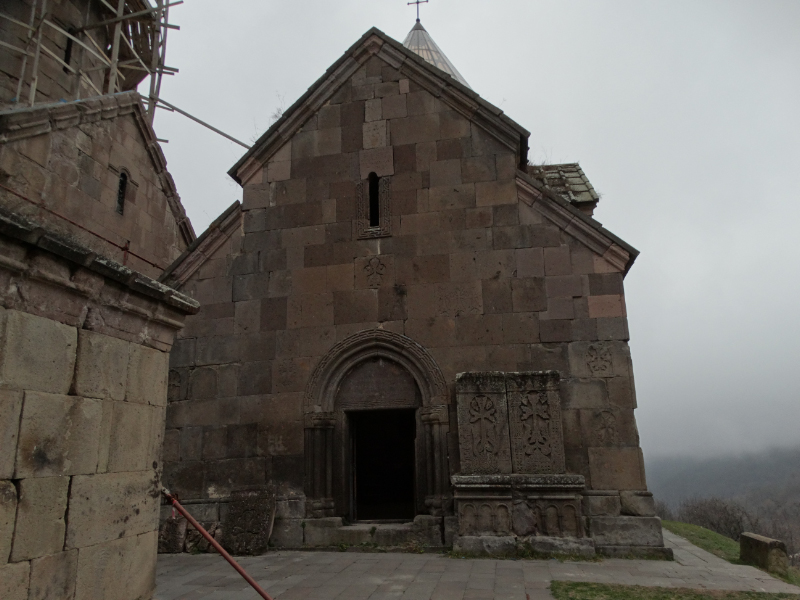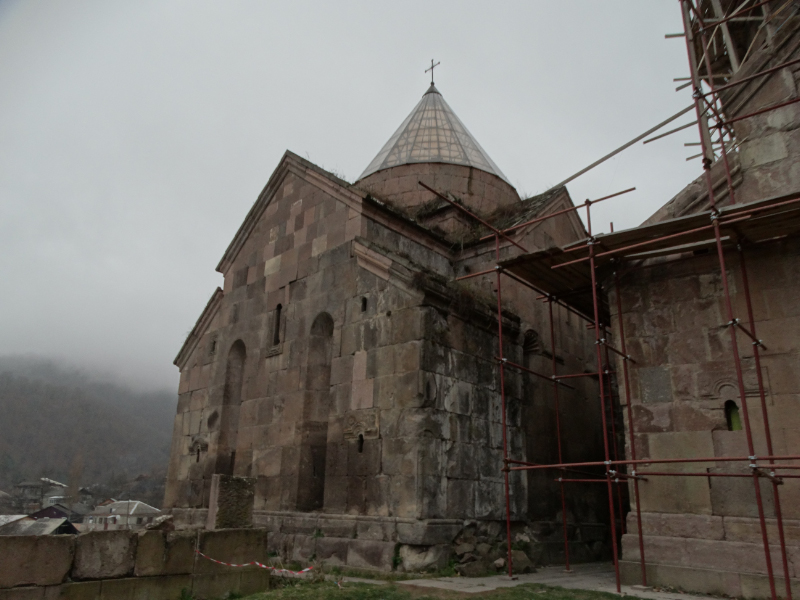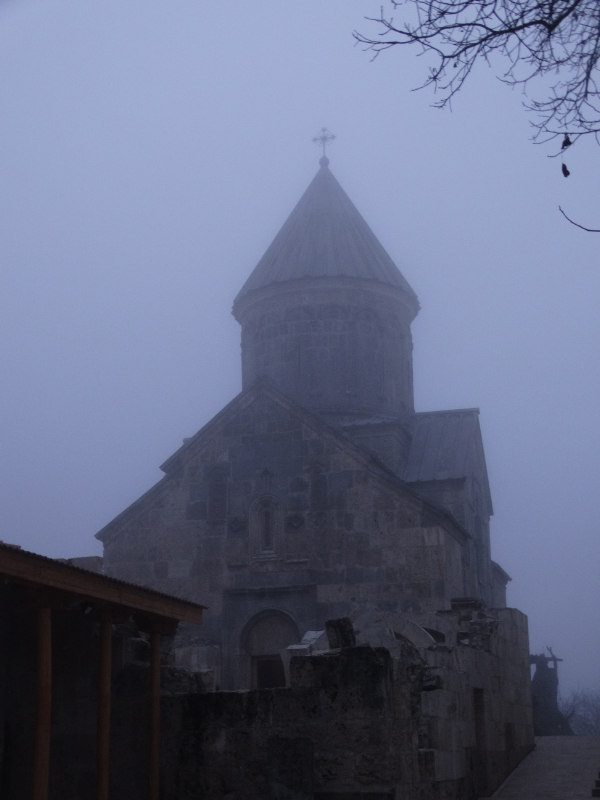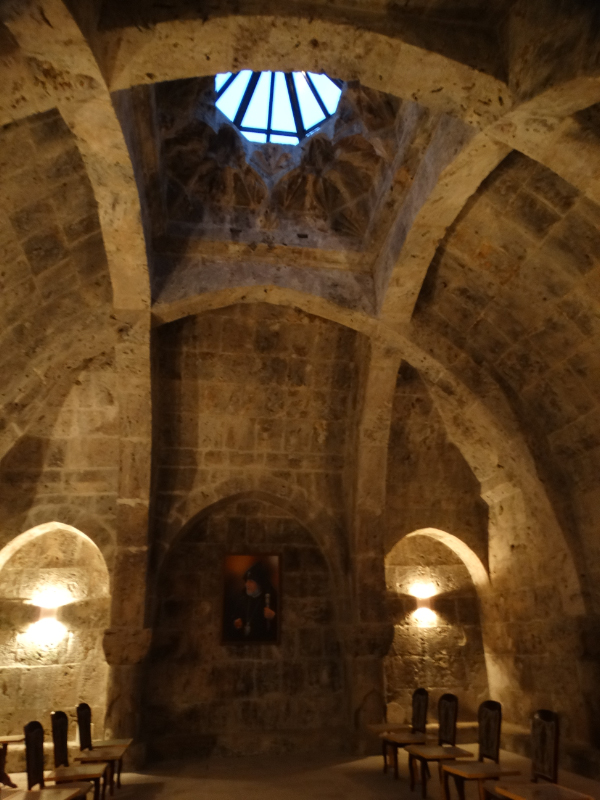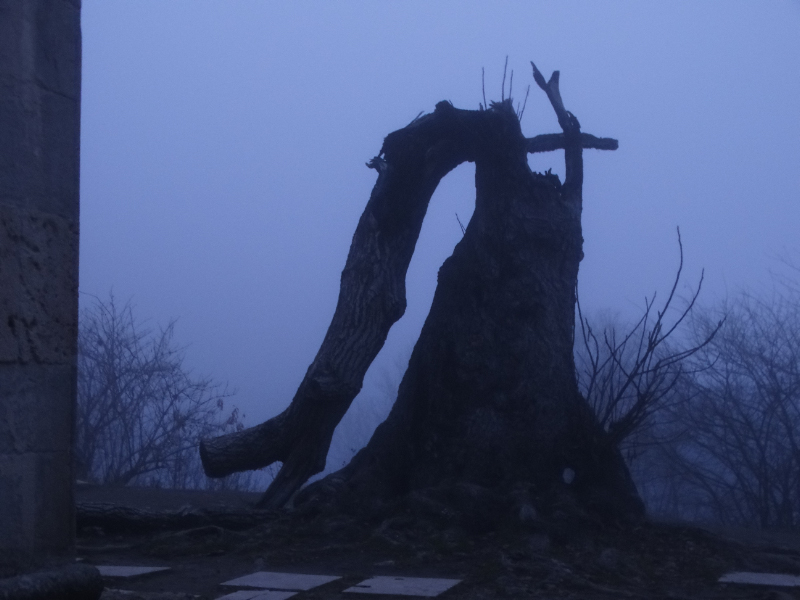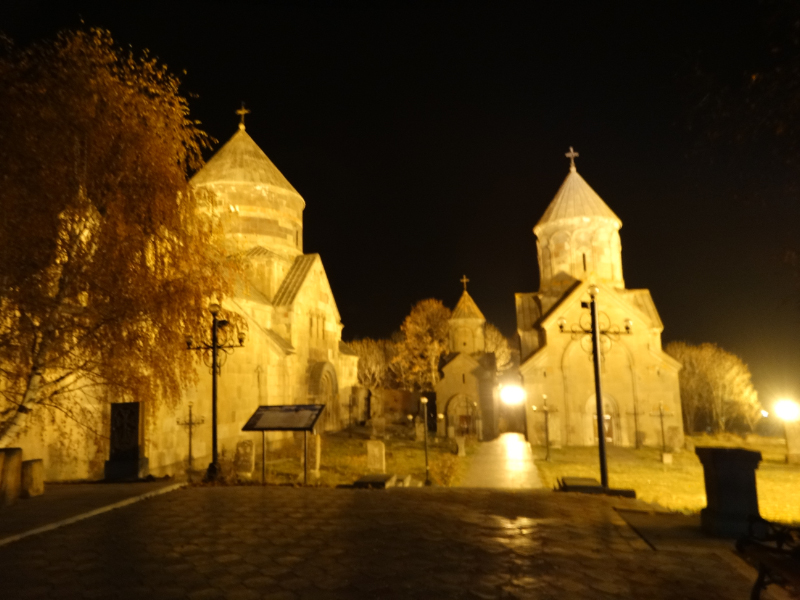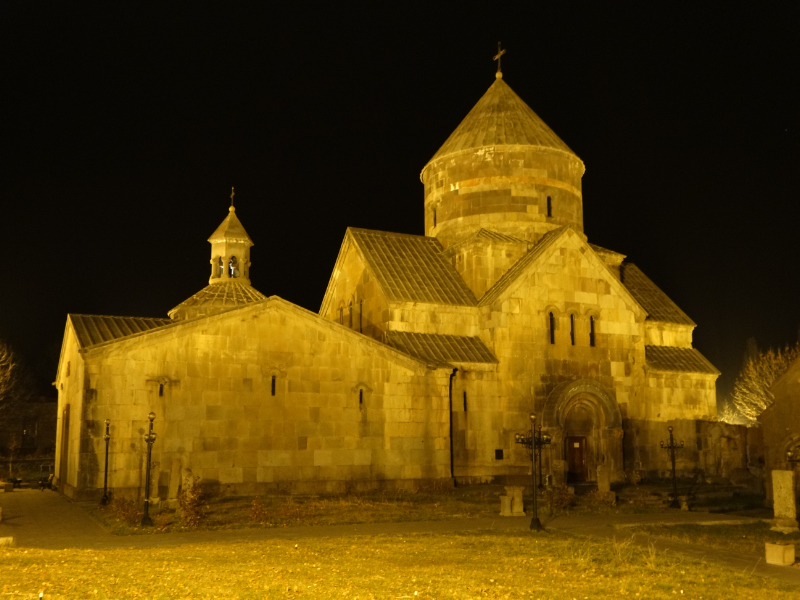Wednesday 19 to Saturday 22 November
Yerevan, the capital of Armenia, is a small city with a feeling of compactness. There is a lot of construction on show, although I have the feeling that some of it has slowed.
It was here we saw our first Christmas decorations and were reminded how much of the year had slipped by.
Armenia is another country coming to terms with post-Soviet independence and we saw a mix of wealth and poverty wherever we went.
Following a mostly caffeine free, sober time in Iran, we found decent coffee. It made coffee shops rather hard to walk past!
The major attraction in Yerevan is the Cascades and surrounding parkland. The Cascade is a massive stairway that is intended to link the downtown Kentron area with a monument and museum. Started in Soviet time, the Cascade was finally completed this century and a heap of cranes mark the site for the museum. That construction is frozen.
There is a rather quaint gallery on the internal part of the Cascades, with escalators taking you from one exhibition to the next.
On a good day you can see Mount Ararat, which is actually located within Turkey but of great significance to Armenians. When we visited, visibility was too poor.
There are some amazing statues in the parkland at the base of the Cascades, including three by Fernando Botero. The most famous is the Smoking Lady.
The other nice area of Yerevan is the Republica Square, with its majestic buildings surrounding a massive open space.
We had already been introduced to Christianity in Armenia on our journey from Kapan to Yerevan. On our second day in Yerevan we took a tour to the east and north east to see some more important sites. Our guide Garik gave us a wonderful introduction to each site.
First was a stop at Garni to see a Greco-Roman temple built approximately first century AD. It was probably built by king Tiridates I as a temple to the sun god Mihr It collapsed in the 1679 earthquake and was reconstructed in the nineteenth century. Nothing survives in this part of the world – either plundered or destroyed by earthquakes, or both.
Among the other ruins on the site is a Royal Bath House, notable for the Greek inscription in the mosaic tiles at the entrance with is translated as “We worked and we received nothing”. A little slave labour?
The next stop was at the Geghard medieval monastery. It is made up of numerous chapels, some of which have been carved into the rocks. Geghard means “the Monastery of the Spear”, and originates from the spear which had wounded Jesus at the Crucifixion. It is now stored at the vatican of the Armenian Apostolic Church.
Of more interest to Garik are the Armenian Khachkar or cross-stones, crosses carved out of stone. He explained to us that no two are the same, and there is generally a certain significance to each stone, whether it is to remember a person or a saint or an event or to make a special request of God.
We then drove to Lake Sevan – the second largest alpine lake after Lake Titicaca. (We had already see Lake Issyk-Kol in Kygyrzstan – the second highest after Lake Titicaca.) Its name means Black Lake, because the lake looked like a black version of Lake Van in Turkey.
We climbed a heap of steps to visit Sevanavank, a monastic complex that was originally on an island in the lake. After Stalin had the lake drained for irrigation the island transformed into a peninsula.
The reward after the climb was an Armenian treat of crayfish wrap – delicious!
We continued north from Lake Sevan to Goshavank a 12th- or 13th-century Armenian monastery located in the village of Gosh. Gosh the village and monastery are named after Mkhitar Gosh, a statesman, scientist and author of the first criminal code, who founded a school at the monastery. One of the students, Kirakos Gandzaketsi wrote The History of Armenia. Khashkars at this monastery are outstanding, especially the “Aseghnagorts” (The Needlecarved).
Garik had us working hard, continuing north to see the Haglarstin Monastery Complex. By now it was getting dark and cold and foggy, so the monastery, set on the edge of a cliff appeared surreal. We were quickly shown around before the keeper retired for the evening.
Our last stop was to the Tsaghkahvit Monastery. By now it was dark and all other tourists had left, so we could only peer through the fence at the beautiful buildings. Tsaghkahvit is in fact the local ski resort and many shops were displaying ski and cold weather gear. We realised just how close winter was.
We had one more day in Yerevan, found decent coffee again and wandered around this relaxed city.
Links in this page are from Wikipedia.
e_header.jpg)

